A rectangular metal plate ABCD is supported by two hinges P1 and P2 so that it remains in equilibrium in vertical plane (with line AB vertical) as shown in the figure. The contact forces R1 and R2 exerted by hinges on the metal plate is best, depicted by Solution in Gujrati
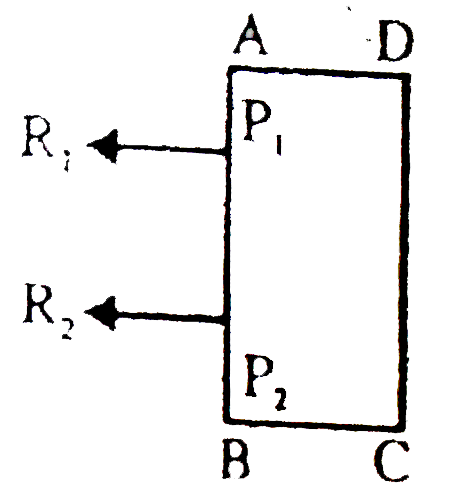
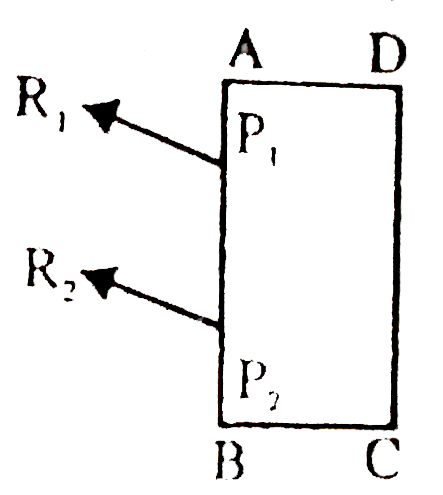
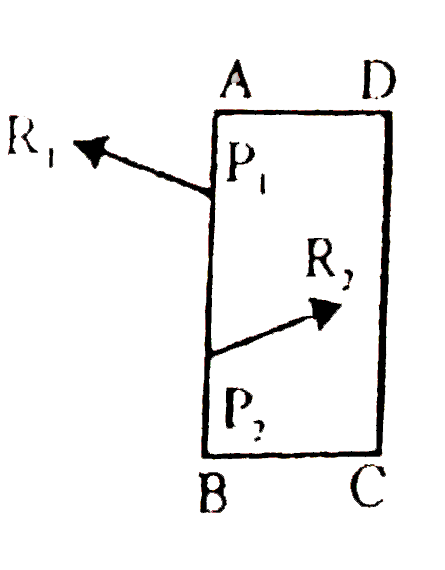
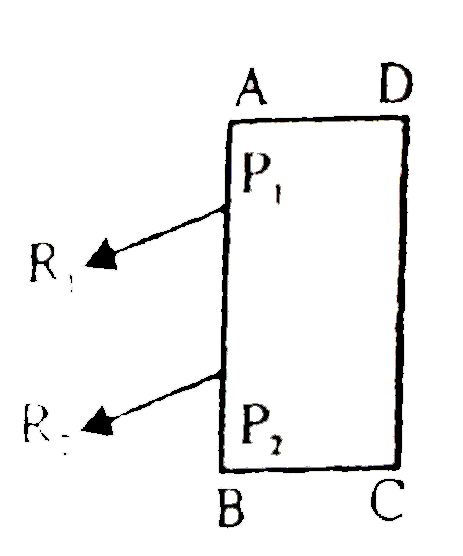
The correct Answer is:C
For the metal plate to be in equalibrium ∑FH=0 and ∑FV=0. This is possibel only in option 3.
Topper's Solved these Questions
- TEST PAPERSBOOK - ALLEN CHAPTER - TEST PAPERSEXERCISE - PAPER 2
60 Videos
- TEST PAPERSBOOK - ALLEN CHAPTER - TEST PAPERSEXERCISE - PAPER 3
92 Videos
- TEST PAPER 4BOOK - ALLEN CHAPTER - TEST PAPER 4EXERCISE - PHYSICS
45 Videos
- UNIT & DIMENSIONS, BASIC MATHS AND VECTOR BOOK - ALLEN CHAPTER - UNIT & DIMENSIONS, BASIC MATHS AND VECTOR EXERCISE - Exercise (J-A)
7 Videos
Similar Questions
The diagram shows the arrangement of three small uniformally charged spheres, A,B and C. The arrow indicate the direction of the electrostatic forces acting between the spheres (for example, the left arrow on sphere A indicates the electronstatic force on sphere A due to sphere B). At least two of the spheres are positively charged. Which sphere, if any, could be negatively charged?
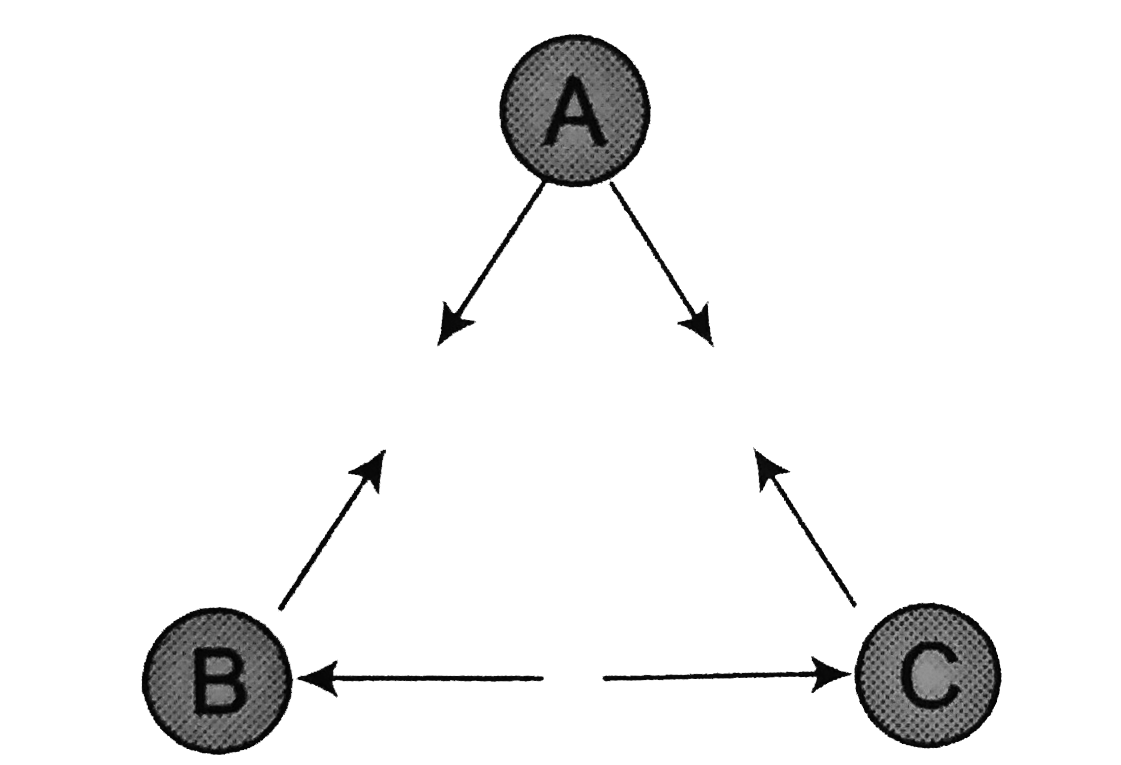
View SolutionA satellite S is moving in an elliptical orbit around the earth. The mass of the satellite is very small compared to the mass of the earth.
View SolutionTwo forces, each of magnitude F have a resultant of the same magnitude F. The angle between the two forces is
View SolutionMatch List I with List II and select the correct answer using the codes given below the lists :
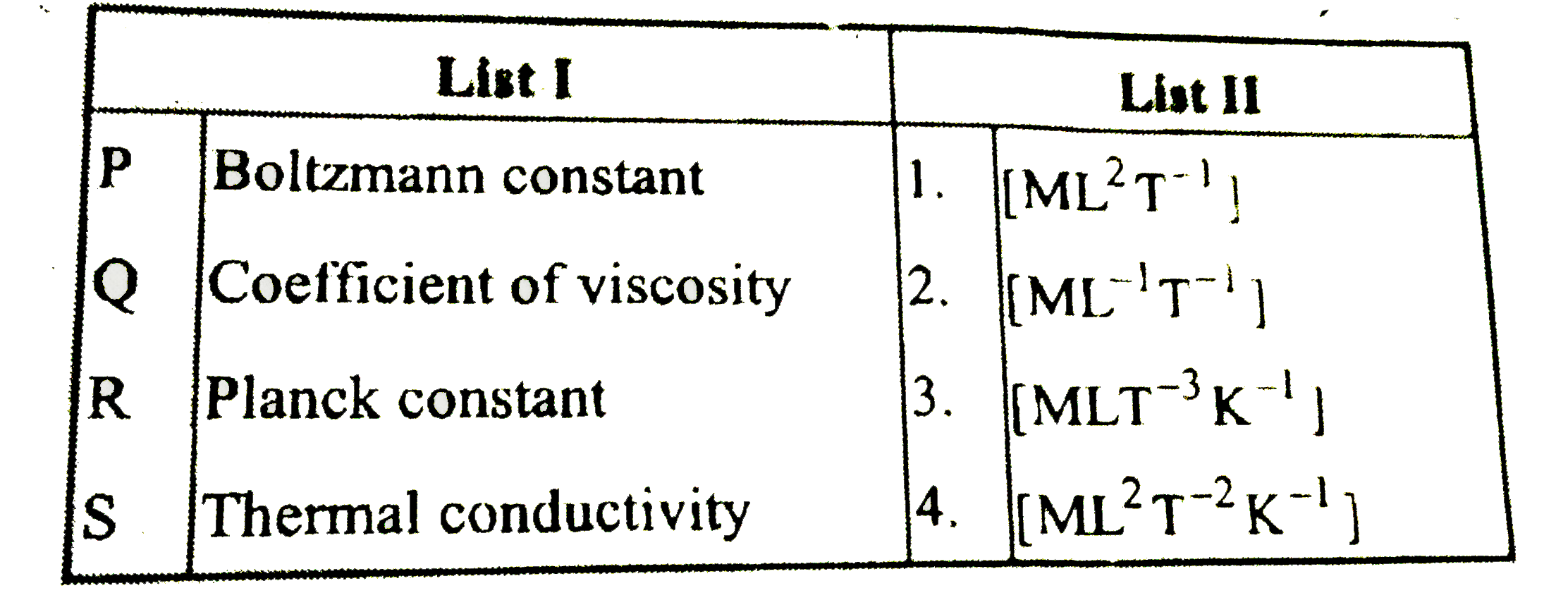
View SolutionIn a triangle ABC,r,r_(1),r_(2),r_(3), are the radii of in circle and ex circles and P_(1),P_(2),P_(3), are altitudes of triangle ABC .Then (1)/(P_(1))+(1)/(P_(2))+(1)/(P_(3)) is equal to
View SolutionFigure shows three resistor configurations R1,R2 and R3 connected to 3V battery. If the power dissipated by the configurations R1,R2 and R3 is P1,P2 and P3 respectively, then

View SolutionOne end of a uniform rod of length l and mass m is hinged at A. It is released from rest from horizontal position AB as shown in figure. The force exerted by the rod on the hinge when it becomes vertical is
View SolutionTwo parallel vertivcal inetallic ralis AB and CD are serparated by l= 1 m . They are connected at the ends by resistance R_(1) and R_(2) as show in the figure . A horizationl metallic bar L of mass m= 0.2 kg slides without friction vertically down the rails under the action of gravity . These is a unifrom horizonal magnetic field of a B=0.6 T perpendicular to the plane to rails . It is observed that when the termainal veloctity is attained , the power disspated in R_(1) and R_(2) are P_(1)= 0.76 W and P_(2) = 1.2 W respectively . Find the terminal velocity of bar L and the values of R_(1) and R_(2)
View SolutionIf the lengths of the perpendiculars from the vertices of a triangle ABC on the opposite sides are p1,p2,p3 then prove that 1p1+1p2+1p3=1r=1r1+1r2+1r3.
View Solutionनिम्नांकित चित्र के अनुसार प्रतिरोधों के तीन विन्यास R1,R2 तथा R3 को 3 वोल्ट की बैटरी से जोड़ा गया है । यदि विन्यास R1,R2 तथा R3 में शक्ति - क्षय क्रमश : P1,P2 तथा P3 है , तो :
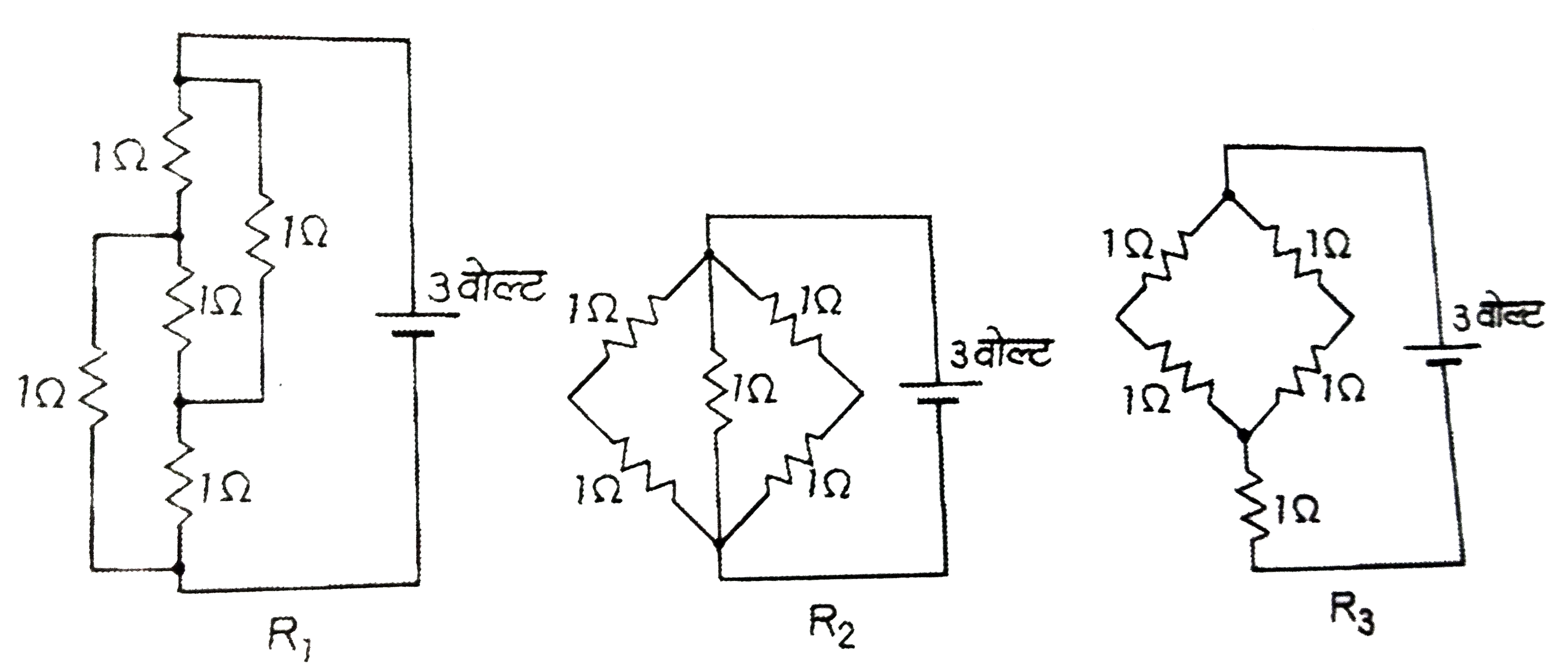
View Solutionयदि a,b,c तीन समतलीय नहीं है। इस प्रकार r1=a−b+c,r2=b+c−a,r3=c+a+b,r=2a−3b+4c यदि r=p1r1+p2r2+p3r3, तब-
View SolutionA square plate is hinged as shown in figure and it is held stationary by means of a light thread as shown in figure. Then find out force exerted by the hinge.
View Solutionचित्र में तीन प्रतिरोधः संयोजन R1,R2 व R3, 3 वोल्ट की बैटरी से जुड़े है| यदि प्रतिरोधों द्वारा व्यय ऊर्जा क्रमश: P1,p2 व P3 हो तो

View SolutionA rod is hinged vertically at one end and is forced to oscillate in a vertical plane with hinged end at the top, the motion of the rod:
View SolutionIf the lengths of the perpendiculars from the vertices of a triangle ABC on the opposite sides are p1,p2,p3 then prove that 1p1+1p2+1p3=1r=1r1+1r2+1r3.
View SolutionThree resistance orientation in the picture R_(1),R_(2) And R_(3) Is shown which is connected to a 3V battery. If orientation R_(1),R_(3) And R_(3) The heat dissipated by P_(1), P_(2) And P_(3) Is then the picture:
View Solution
